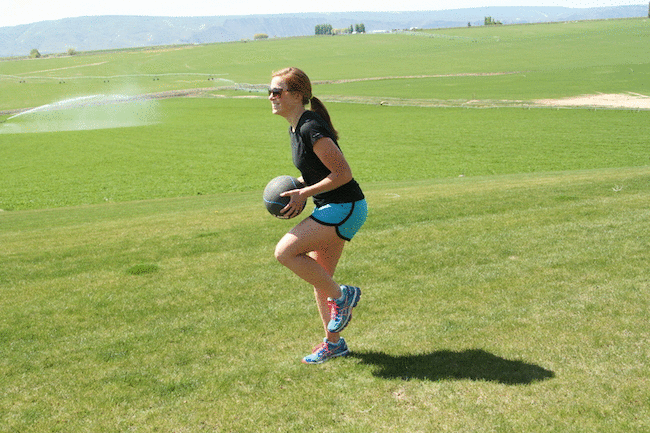Plyometric workouts are my favorite type of cardio for many reasons. The first and most important reason is that plyos are effective. They’re effective for athletes, normal people who want to be fit, senior citizens who don’t want to break a hip and children.
Plyometric exercises are effective
Here’s why:
- jumping exercises are terrific for cardio HIIT workouts and fat loss
- plyos require more muscles than other exercises, thereby increasing calorie burn and strength
- plyometrics increase balance and coordination
- plyometric workouts improve your explosive strength and acceleration, making you faster
- jumping exercises make your body smarter (neuromuscular response)
- plyo workouts increase joint, tendon and ligament strength
There’s a lot of science that goes in to plyometric workouts for athletes. I’ll give a few workouts that make you faster and improve your vertical jump as well as fat loss.
At a basic level, any jumping exercises will make you faster and stronger while burning fat. If you want to lose fat, plyo workouts are a great way to do that. You push yourself pretty hard, so it doesn’t take long to get results.
Are you worried about your grandma’s coordination? Senior citizens can benefit from a toned down version of plyometrics. Low box step ups, skipping and hopscotch-like activities can definitely help.
Here’s how to incorporate plyometrics in to your workout routine
For fat loss
Tabata-like intervals are perfect for fat loss. High intensity intervals like tabata or other HIIT workouts increase your resting metabolic rate more than steady state cardio (like running).
Frequency: twice per week on nonconsecutive days
Workout
20 seconds on // 10 seconds off // 8 rounds each //alternate exercises for each tabata
- Burpee + High Knees
- Up Down Plank + Mountain Climber
- Tuck Jumps + Skaters
- Kettlebell Swing + Squat Jumps
To improve athleticism and speed
If you’re doing plyometric workouts to improve your level of fitness or speed, it’s important to give yourself proper rest so that you’re muscles can give it all they’ve got during the exercises. Low volume, high intensity workouts improve the stretch-shortening cycle of your muscles. In layman’s terms, it helps you generate force quicker and become faster as well as coordination.
Frequency: 2-3 times per week on nonconsecutive days
Workout
Rest 1-2 minutes between each set of exercises
- Lateral Jumps 2×10
- Box Jumps 2×10
- Power Skipping 2×20 yards
- Broad Jumps 2×10
- Sprints

To improve vertical jump
Everyone knows you’re cool if you’ve got hops. Your level of vertical jump is helpful for a lot of things in life like spiking a volleyball or trying to see what’s in the top cupboard without bringing out the step ladder.
Frequency: 2-3 times per week on nonconsecutive days
Workout
Rest two minutes between each set of exercises.
- Box Jumps 3×10
- Depth Jumps 3×10
- Tuck Jumps 3×10
Notes:
- If you have a low level of fitness, take at least two months of regular strength training prior to beginning a plyo regimen
- If you’re a plyo beginner, take it slow and easy
- Thoroughly warm up prior to working out
- Perform exercises on a well padded space, such as grass, track material or padded floors